Concept
Clean Cooking is a cooktop that is designed to reduce the amount of pollution and green house gasses produced during the cooking process. This product is designed based on the UN Sustainable Development Goal, Affordable and Clean Energy in the context of cooking. Clean cooking is meant to be portable, affordable, efficient, and battery charged via solar panels. I came up with this idea because my family goes camping every summer and I noticed we create a lot of waste when trying to cook food when we get to the campground. The main contributors were the propane canisters that were bulky to take camping as well as get rid of. This made me think there should be an easier way to cook food when there is no stove around, that does not involve a huge generator.
Goals
My main focus of this project was to test for usability and desirability. I wanted to test if users would be able to easily understand how to use the cooktop and charge the product as well as making sure the experience was desirable. To test these attributes, I will conduct a user test where I will have the users complete some tasks and obverse the success to completion as well as how long it took them to do the task. I will also be asking them questions during and after the testing to get more insight about the product and their experience. As Affordable and Clean Energy was my UN Sustainable Development Goal I was addressing with this design, my main goal was to incorporate a clean and renewable energy source into the cooking process. To me, the first thing I thought about was solar panels since the sun is free and solar energy does not create as much pollution as propane would. In the case of having spotty sunlight streams, I made it a battery charging system so users could use the cooktop with peace in mind even when the sunlight is covered in clouds as long as their batteries were charged.
Implementation
To create a cooktop that was portable and solar panel charged, I focused on 3 main things. Making the weight of the prototype realistic, so users get a real feel of what the product would weigh when they are taking it around. Making the battery compartment detachable and easy to use, so users would have a good experience. And last but not least, making the cooktop look like a cooktop while making the usage of it seamless and intuitive. With these in mind, I decided to have a slanted dial panel profile to make it easier for the user to see what level the heat is on when using the product as well as only having one dial to control the temp and if the cooktop is currently on or off. This allows clear communication between the product and the user. I also designed the battery to have a screen on the outside so the user can see how much their battery is charged as well as how much cook time they had left so there is no guessing game to when cooking.
Visual Documentation
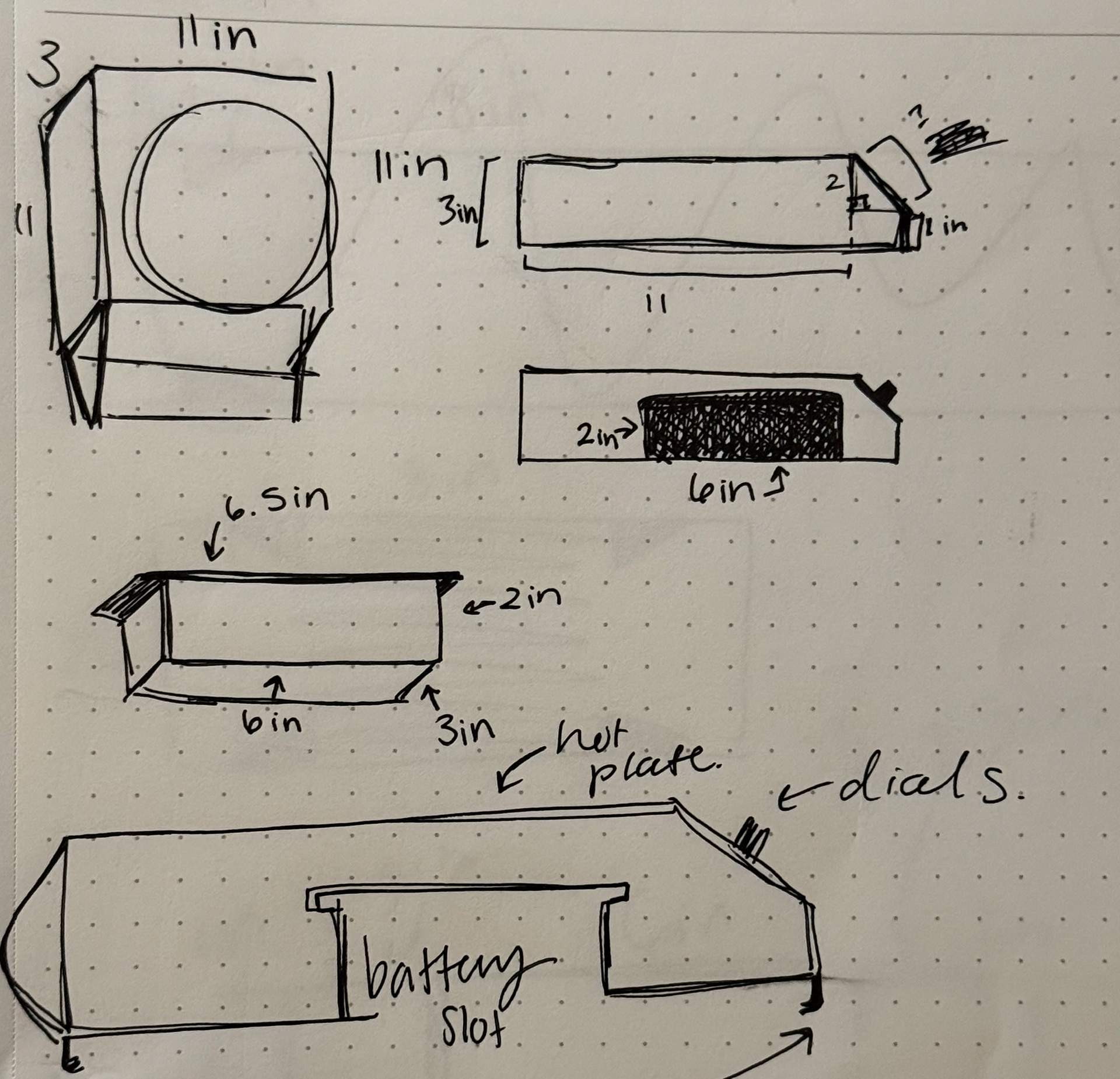
initial sketch
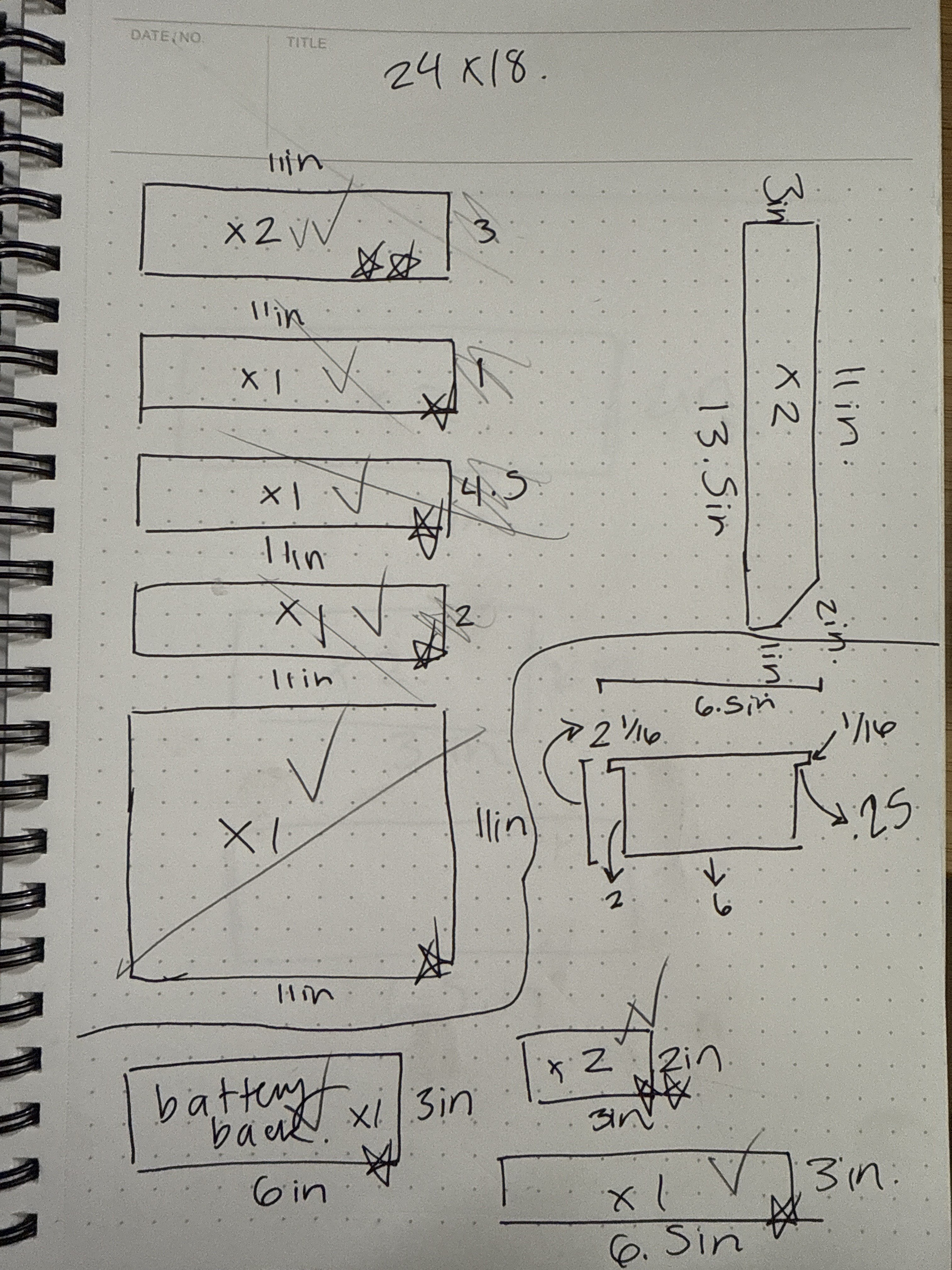
piece and dimension sketches

final product vison sketch

pieces cut out

joint of 2 pieces

battery compartment progress
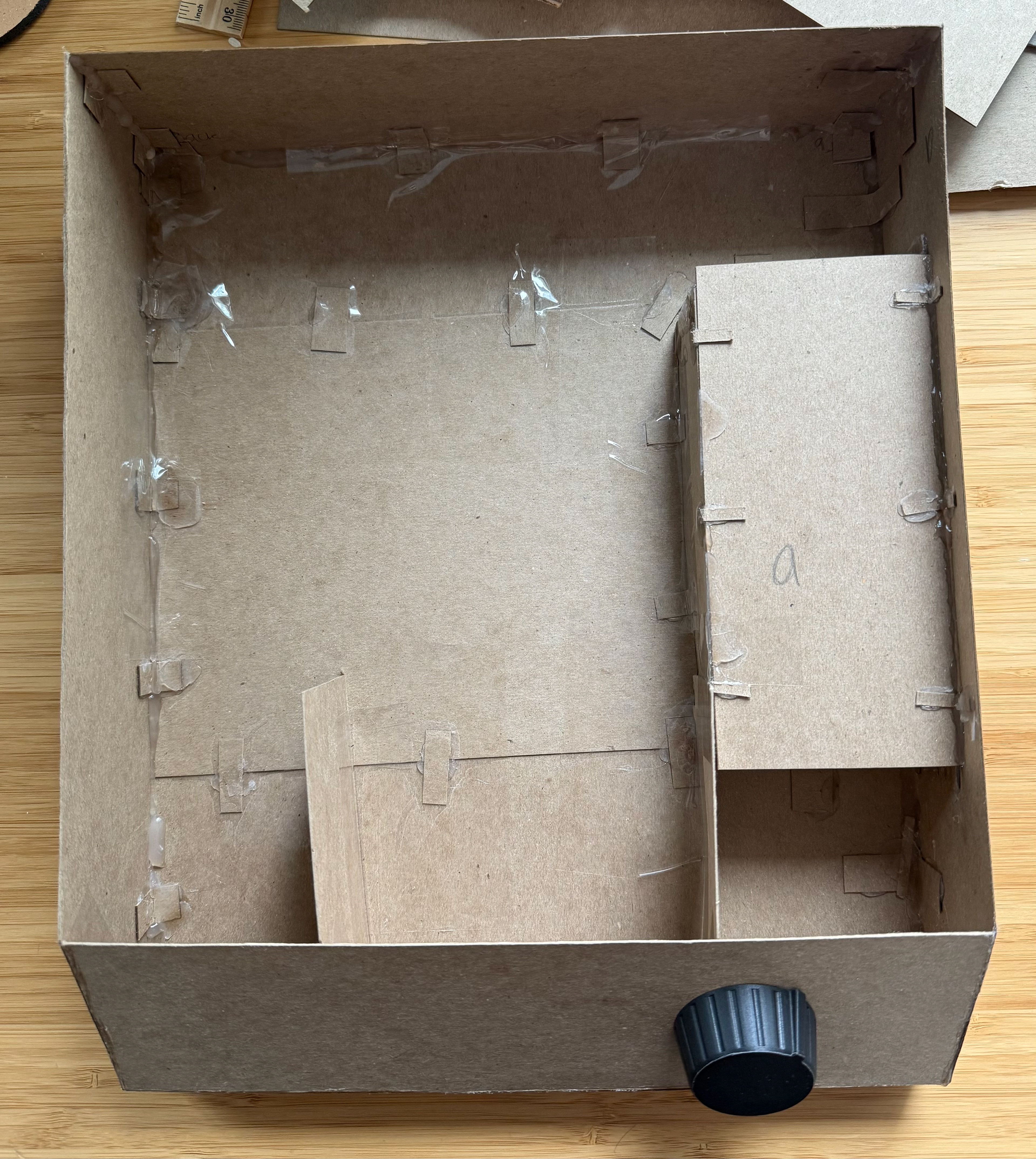
all pieces but the top connected
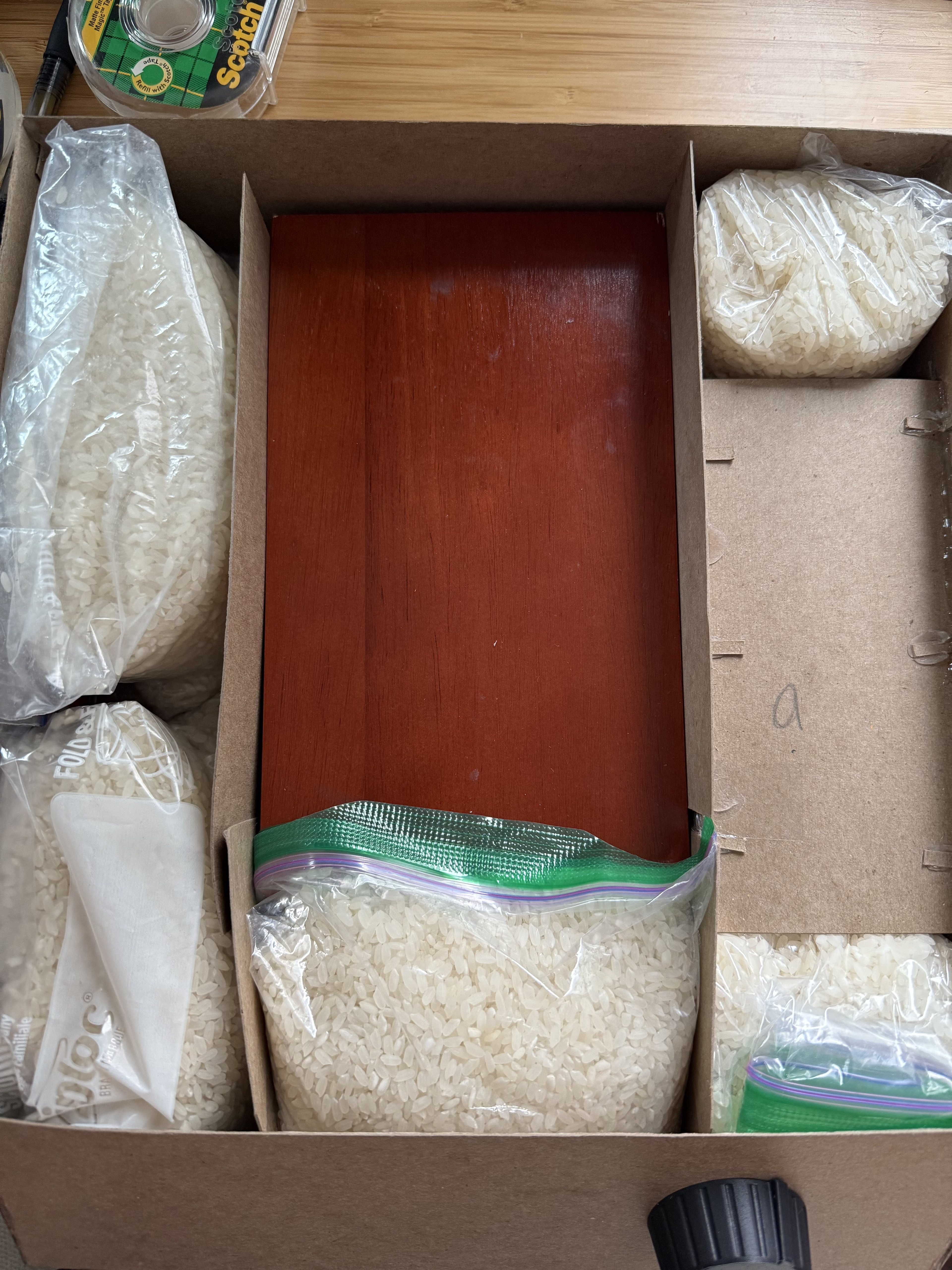
weight and supports added
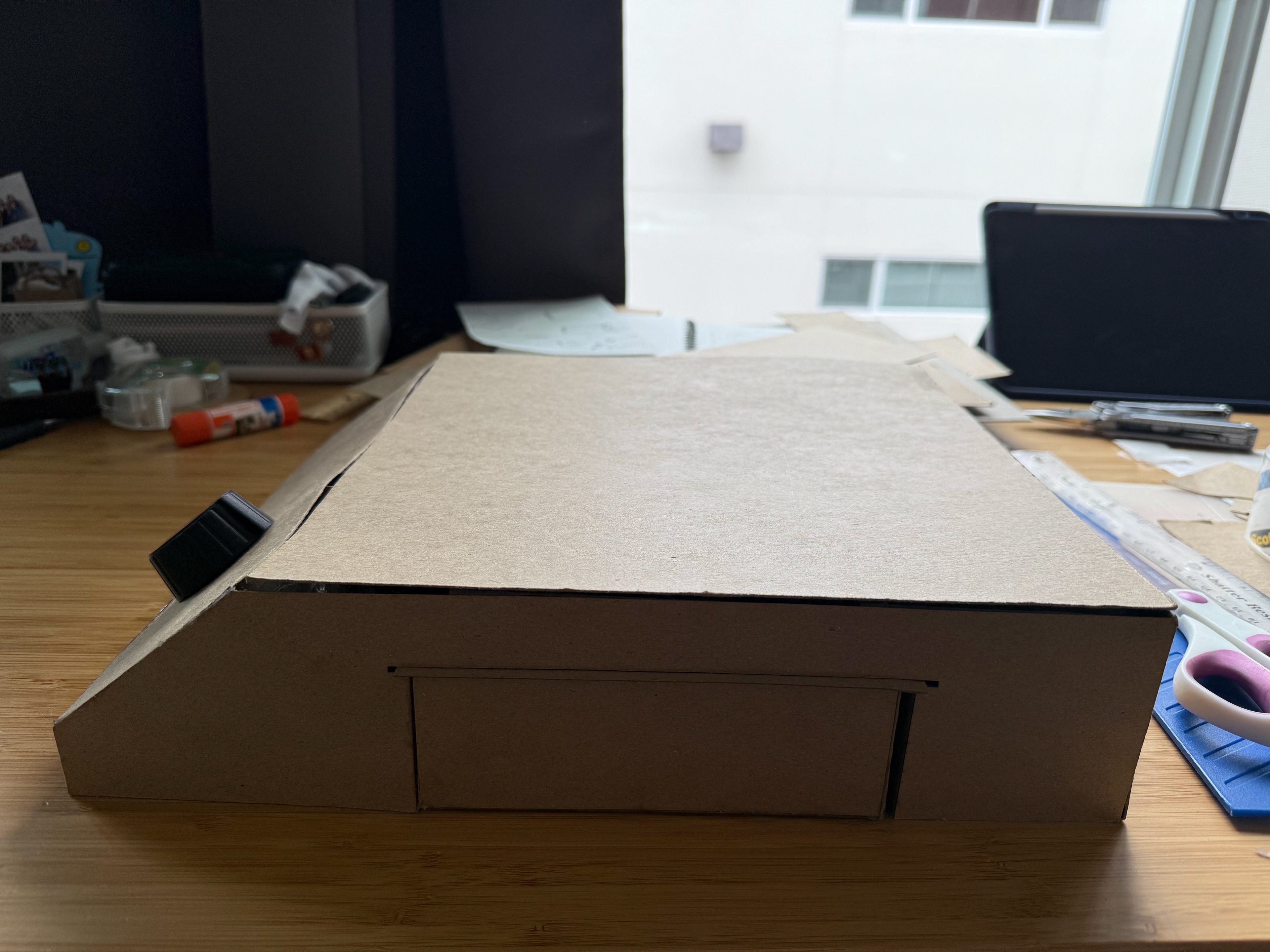
all pieces together

final product: front view
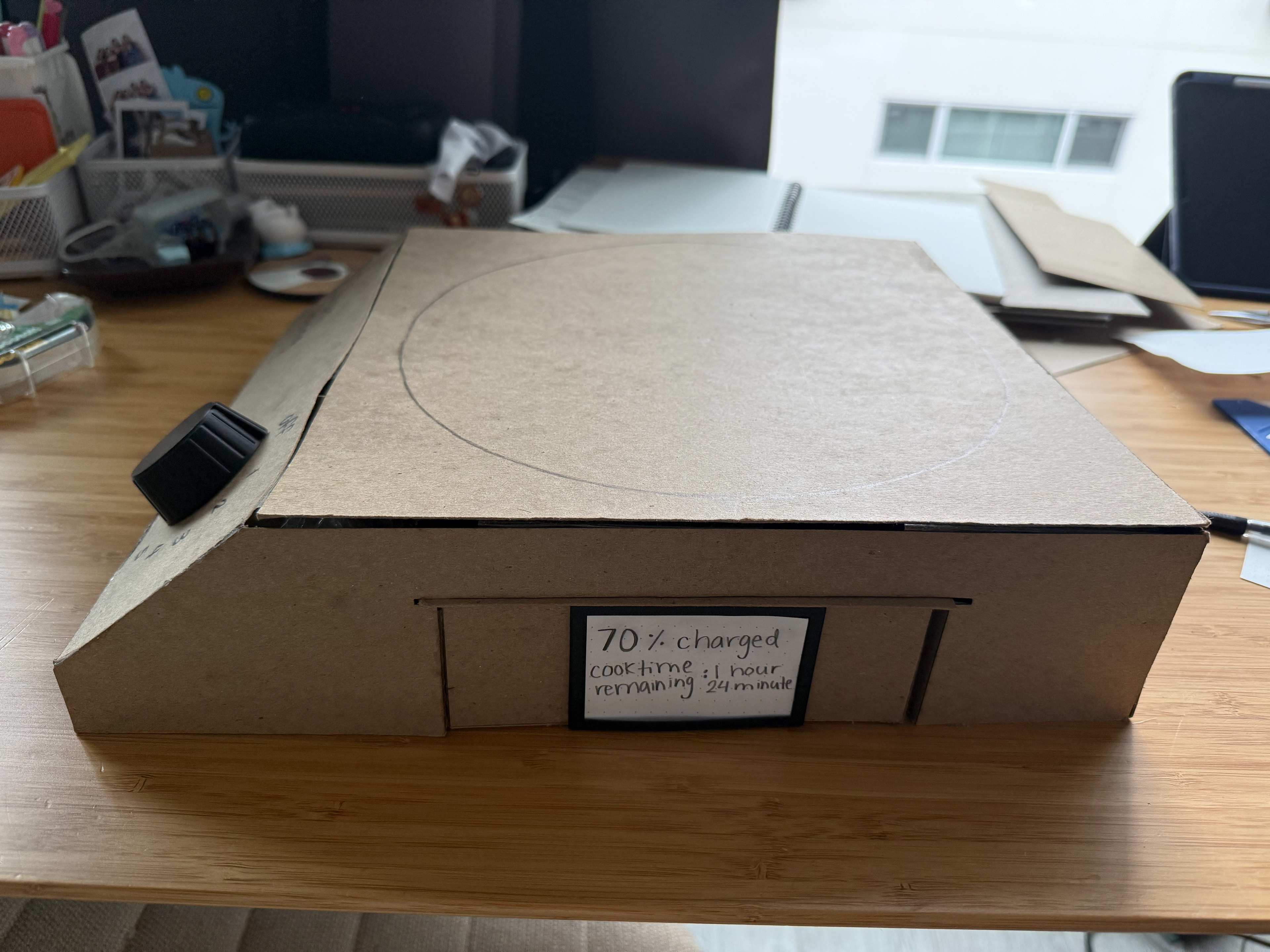
final product: side view
- These are some of the sketches I did for the design of the product
- The next couple of pictures was the process of putting the pieces together using hot glue, tape and scrap pieces of chipboard to make supports and structural points
- This includes the process of adding weight to the product as well as the slanted front panel profile for easy access and visibility
-The final product and the details added
Evaluation
To test the desirability and usability of the product, I asked a couple users to test the product. I had them complete a couple tasks. Turn on and off the cook top, charge the battery, and check how much power the battery has left. During the testing, all users found it really easy to check the power and turn on and off the cook top, but most struggled to find how to charge the battery since there was a lack of solar panel and cord. These were reasonable struggle since my product only consisted of the cooktop and not the solar panel. In hind sight, the second task was one that was not well fit for my product but gave me a lot of insight on what users usually look for when going to charge a battery.
From these tests, I found my product to be a n effective prototype for testing desirability and usability since I easily gained lots of information on what works and does not work about this certain iteration of the design. I also found that asking questions during the user testing gave me lots of insightful feedback from users and what they thought about their experience and if they would use the product if it were to be a real product in the market. Many said they would use it if they were in situations where there is no stove around, but find it difficult to switch to since they already have stoves at home and do not know how they would constantly charge the battery since it requires sun to charge while they live in apartments in the city.
Analysis
Aspects of the prototype that worked well was creating a realistic representation of how the final product would feel like, with the dial being tactile as well as the weight of the product being similar to the goal weight of the final product. This helped the user testers have a realistic experience and a measurable feel for the final product instead of having to imagine these aspects of the product. The connection between the top plate an the rest of the body of the cooktop was not great since I ran out of supplies to connect the two, so having more supplies available is something I would have changed or at least changed the order of connecting things so I would not run out of supplies for the side of the prototype that was the most important. Something that I would do differently is adding a handle to the prototype even though it is not weight bearing. The main purpose of the prototype was to test the usability and desirability of the cooktop but I did not create the portable aspect of the cooktop since I knew no matter how I made the handle, it would not be able to withhold the weight of the prototype with the materials I had available to me. This means the product was not tested for all its purposes and left out information I could have gained from having a handle even if it could not withhold the weight of the prototype.